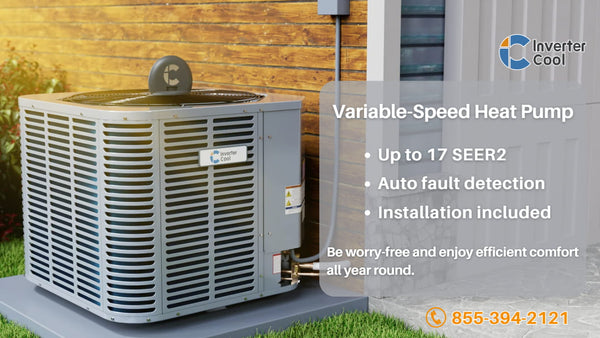855-394-2121
855-394-2121

As the fall season sets in, it's crucial for homeowners to be prepared for potential issues with their heat pumps. Understanding and addressing common problems can save you both time and money. In this guide, we'll walk you through troubleshooting your heat pump, ensuring a cozy and efficient fall and winter season.
Fall can bring about specific challenges for your heat pump. Here are some common problems you might encounter:
- Reduced Heating Output: During the fall, you might notice that your heat pump isn't producing as much warmth as it should. This can lead to discomfort and increased energy bills.
- Strange Noises: Unusual sounds like banging, clanking, or rattling coming from your heat pump can indicate underlying problems with components such as the blower motor or fan blades.
- Inconsistent Performance: Your heat pump may struggle to maintain a consistent indoor temperature, resulting in fluctuations that make your home less comfortable.
Before calling in the professionals, try these DIY troubleshooting steps:
💪Check for Blocked Air Vents: Inspect all the air vents in your home to ensure they are not obstructed by furniture, curtains, or other objects. Blocked vents can impede airflow and reduce heating efficiency.
💪Inspect Thermostat Settings: Review your thermostat settings to make sure they are correctly configured for your desired temperature. Consider upgrading to a programmable thermostat to enhance control and energy savings.
💪Examine the Outdoor Unit: Clean the area around the outdoor unit to remove leaves, debris, and snow. A clean and unobstructed unit ensures proper airflow, which is essential for efficient heat exchange.

While DIY troubleshooting can help with minor issues, it's essential to recognize when you need expert help. Call a professional HVAC technician for:
👨🔧Refrigerant Leaks or Low Levels: Refrigerant is critical for the heat exchange process in your heat pump. If you suspect a refrigerant issue, call a professional immediately, as handling refrigerants requires specialized training and equipment.
👨🔧Electrical Issues: Problems with wiring, circuits, or electrical components should be left to qualified HVAC technicians who can safely diagnose and repair them.
👨🔧Complex Mechanical Problems: If you notice issues with the compressor, reversing valve, or other mechanical components, it's best to rely on professionals with expertise in heat pump repair.
👨🔧Persistent Issues: If your troubleshooting efforts don't resolve the problem or if issues keep recurring, it's a sign that you should seek professional help.
The best way to avoid fall heat pump problems is through regular maintenance. Here's a fall maintenance checklist:
👉Clean or Replace Air Filters: Dirty filters can restrict airflow, reduce efficiency, and strain the system. Regularly clean or replace filters to maintain optimal performance.
👉Lubricate Moving Parts: Proper lubrication reduces friction and wear on moving components, extending the life of your heat pump.
👉Inspect and Clean Coils: Dirty evaporator and condenser coils can hinder heat transfer. Periodically clean these coils to ensure efficient operation.
👉Test the Thermostat: Check the accuracy of your thermostat by comparing its temperature readings to a calibrated thermometer.
👉Tighten Electrical Connections: Loose electrical connections can lead to safety hazards and system malfunctions. Ensure all connections are secure.
👉Clear Debris: Regularly clear leaves, grass, and other debris from around the outdoor unit to maintain good airflow.
In case your heat pump encounters issues on a chilly fall night:
👉Backup Heating Source: In case your heat pump fails during cold fall nights, have alternative heating sources such as space heaters, electric blankets, or a backup generator to stay warm temporarily.
👉Local HVAC Technicians: Keep contact information for local HVAC technicians who provide emergency repair services. Being prepared with trusted professionals can save time in critical situations.
👉Safety Checks: Regularly inspect your heat pump for safety issues, such as carbon monoxide leaks, and install carbon monoxide detectors in your home for added safety. Address any safety concerns immediately to protect your family.
👉Upgrade to the latest HVAC products: Consider choosing a smart and advanced product that comes with features like auto fault detection and remote alerts to technicians for immediate action. The InverterCool heat pump system is a great example of such a product as it can help identify potential issues promptly, allowing for troubleshooting before problems become serious enough to cause a complete shutdown.

Don't let heat pump issues catch you off guard this fall. By understanding common problems, following DIY troubleshooting steps, and scheduling regular maintenance or upgrades to smart products like InverterCool, you can ensure a warm and comfortable season.
Leave a comment